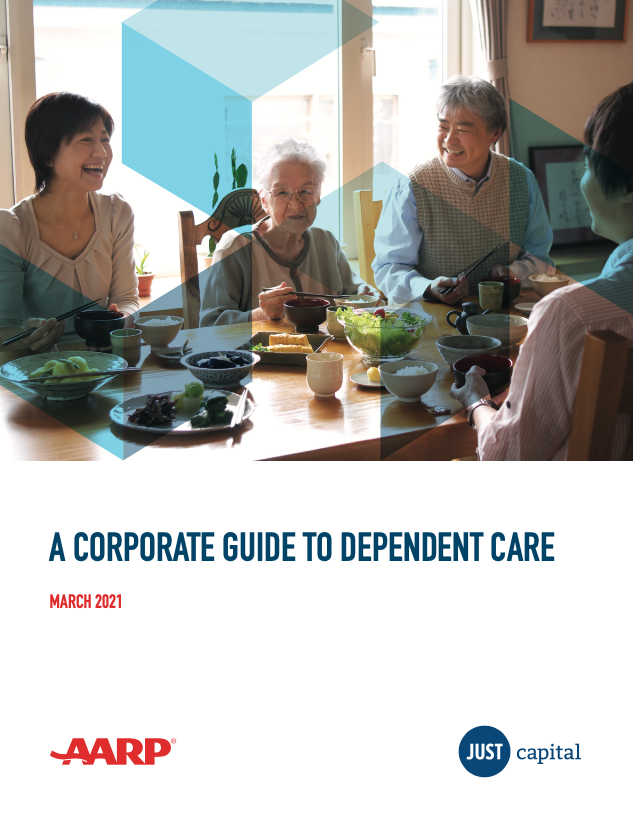A Corporate Guide to Dependent Care
Even before roughly 40% of Americans began working from home to prevent the spread of COVID-19, millions of Americans were juggling the demands of work and caregiving, with more and more caregivers struggling to coordinate care. Current caregiving infrastructure in the United States does not meet the many needs of families, and most corporate policies are focused on filling short-term care gaps in lieu of broader systemic support with a strong focus on childcare, meaning that those caring for older adults, or a combination of older and younger family members, are often left behind in policy creation. Since the needs of caregivers vary so vastly, depending on the provision of care to older adults, children, or some combination of the two, any conversation about companies’ policies around dependent care must explore the need for a broader infrastructure of care to be developed to build community, increase employee engagement, and better engage stakeholders more broadly.
Benefits of Dependent Care for Employers
Workers are a primary value driver for companies, and employers can increase productivity as well as decrease absenteeism by providing resources to support employees who are also care providers. Most importantly, evidence suggests that offering dependent care will keep women within the workforce and provide critical support for fathers and secondary caregivers. AARP’s Caregiving in the U.S. Report highlights some of the sacrifices employees make at their jobs in order to accommodate for caregiving responsibilities at home, especially as it relates to caring for older adults. Workers may go in early to work or leave late, reduce their schedules to part-time hours, take leaves of absence, turn down promotions, retire early, and even quit working altogether. It is clear overall that the lack of support and resources for both child and elder care forces workers to take on increased responsibilities at home without help, and this prevents them from bringing their full capacity to the workplace. To help mitigate this disparity, companies can provide myriad flexible elder and childcare options for their employees.
Increasingly employers will need to offer this benefit to attract and retain talent. Employees look for companies that support both primary and secondary caregivers, and the millennial generation that makes up a large portion of the U.S. workforce is no exception – many of these employees factor their plans for family building and childcare into their job search, and providing these resources in benefits offerings can give companies an advantage as they look to distinguish themselves from competitors.
JUST Capital was proud to partner with AARP to make this guide available. Download the report below to read the full report detailing the following key findings:
- In a time of immense sacrifice and hardship across the globe, the responsibilities of family caregivers, providing care for either children or adult family members, and in many cases both, have grown exponentially as they work to balance their professional lives and the well-being of their families and loved ones.
- Key findings from AARP’s 2020 report, “Caregiving in the United States,” show that nearly one in five caregivers (19%) is “providing unpaid care to an adult with health or functional needs,” and is often left out of existing dependent care policies, which tend to focus more on access to childcare.
- 80% of working mothers are employed full time, compared with 96% of working fathers, in many cases leading to the difficult choice of either missing work (or losing a job altogether) or ensuring proper care arrangements for those who depend on them.
- Data insights from JUST Capital’s 2021 Rankings of the largest public U.S. companies show that just 14% of companies disclose a backup dependent care policy, inclusive of elder care.
- Investing in resources that support employees with caregiving responsibilities can reduce turnover and absenteeism, increase engagement, and help to attract and retain talent.
We invite you to read the other two guides in this series offering additional insights on navigating key workplace issues in the wake of the coronavirus pandemic:







